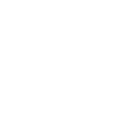Help me with Driver application with AdminStudio
Please instruct me how to find whether the application is Driver application or not and please suggest step by step process to deal with driver application using admin studio. Please friends and Thanks in advance.
Answers (2)
See the below answers
to check if an application is a driver package check for .inf and .cat files in the source. I believe AdminStudio has a 'Driver Package' plugin/addon/tool allowing you to create DifxApp driver packages easily.
If I remember correctly you start the wizard, select all the inf, cat and dll files you need in the package and Adminstudio will create a package for you
Comments:
-
Thanks for your reply pjgeutjens. Please help me with the steps how to do driver application with Admin Studio. As that you mentioned that it is very easy through Admin Studio.
Please suggest step by step procedure. - vinodreddy10 12 years ago
The below links may help you..
http://www.symantec.com/connect/articles/readyuse-dpinst-driver-applications
http://www.msigeek.com/285/creating-installation-for-device-driver-applications-using-dpinst
http://www.symantec.com/connect/articles/how-package-signed-device-driver-using-wise-package-studio
Comments:
-
Thanks jagadeish, I'm a bit confused. Could you please explain it clearly. The first step is that i have to find the .Inf and .pnf file. what i have to compare because inf and pnf files will not capture right, so what i have to do. Do i need to add Difx merge module to do that. Please jagadeesh suggest me - vinodreddy10 12 years ago
-
When a Driver application gets installed on to a machine, it installs driver information like PNF, INF, CAT files in the location “C:\Windows\infâ€. By default, these files will be named as oemXX.pnf or oemXX.inf where XX stands for the number. Ex: oem1.INF, oem1.PNF and so on. So when we do a capture of such applications, these XX values will be hard coded which does affect many other device driver applications which are pre-existent in the machine. Hence, in this case we used to customize the package by writing few Custom actions using “setupapi.dll†in such a way that it checks for the max XX value which is present in the machine and install the PNF or INF file of the package.
This approach takes a lot time in creating multiple custom actions for copying oem/pnf files. In this article, we discuss on a executable “DPInst.exe†which makes our life easy in dealing with driver based packages.
If you are using DPInst.exe, then you need to follow these below steps to achieve efficient driver installation.
Step 1: Search for “*.inf†files in the captured folder.
Step 2: Cross check the contents of this file (step 1) with the contents of “*.inf†files under “[WindowsFolder]INF†folder.
Step 3: Delete the file “oemXX.inf†from “[WindowsFolder]INF†folder from your package.
Step 4: Copy DPInst.exe under the location where you get the “.inf†file
Step 5: Write a custom action as shown in the above link (Previous post)
Repeat the above steps from 1 to 5 for each oemXX.inf files. By following this, the MSI package created will be able to install the driver files without affecting the pre-existant application’s functionality as well as the operating system.
If you are using DifxApp then the Step-by-Step process of packaging driver application using DifxApp merge module is nicely explained in the below link
http://www.itninja.com/blog/view/driver-installation-from-an-msi-using-microsoft-difx - jagadeish 12 years ago -
I read this already at the time when you provided the link, my doubt is that i install driver application and do precapture. but those wills will not capture right. so what is step1 mean.
step2: where i have to compare
Please this is a little bit confused, please explain it clearly or please provide me your contact number so that I'll call you. - vinodreddy10 12 years ago -
When you run setup capture, it captures .inf, .pnf, .sys, .cat everything..
Why are we going for DPinst.exe or DifXApp is, when we do a capture of such applications, these XX values will be hard coded which does affect many other device driver applications which are pre-existent in the machine Hence, in this case we used to customize the package by writing few Custom actions using “setupapi.dll†in such a way that it checks for the max XX value which is present in the machine and install the PNF or INF file of the package. - jagadeish 12 years ago



